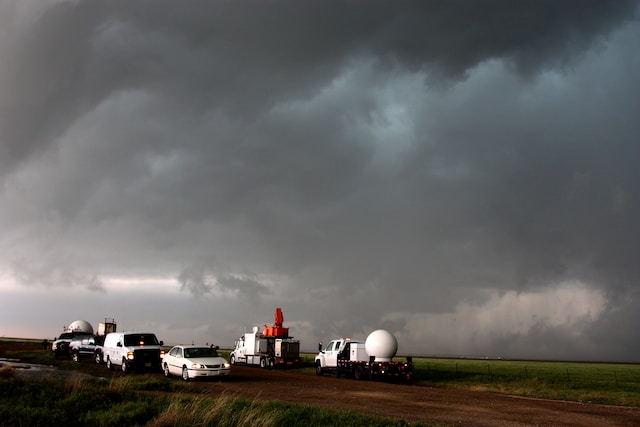Weather forecasting has come a long way since the days of observing the sky and predicting weather patterns based on intuition and experience. Today, meteorologists rely on advanced tools such as weather computer models to make more accurate predictions about weather patterns in their regions.
Weather computer models are digital simulations that use sophisticated mathematical algorithms to predict how atmospheric conditions will evolve. These models use climatological data, current atmospheric conditions, and historical information about past weather patterns.
In this blog post, we’ll look at how these models work, why they’re essential for weather forecasting today, and what challenges remain in using them effectively.
How Do Weather Computer Models Work?
Weather computer models are intricate systems that decode the atmosphere’s behavior to provide accurate forecasts. They employ a systematic approach involving data division, parameter inclusion, equation execution, and human interpretation. Here’s a breakdown of how these models work to forecast weather effectively:
- Grid-Based Representation: Weather models divide the atmosphere into a three-dimensional grid. Each grid point represents a distinct location within the target area, whether small or extensive. Parameters such as temperature, humidity, wind speed, wind direction, and cloud cover are assigned to each point.
- Initial State from Observations: The models kick-start by establishing the initial state of each grid point. This state is derived from real-time observations collected through satellite data, capturing a snapshot of the atmospheric conditions.
- Specialized Equations: A set of technical equations comes into play to simulate atmospheric interactions. These equations encompass diverse factors, including thermodynamic processes like buoyancy, and elucidate why hot air balloons ascend. They also account for convection – the fluid movement due to temperature differences.
- Complex Interactions: The equations define how various atmospheric factors interact, considering changes in temperature due to altitude shifts and pressure fluctuations. This process assists in forecasting cloud behavior and precipitation intensity over different timeframes, spanning hours to weeks.
- Frontal Collisions and Human Judgment: The models aim to predict events like the collision of cold and warm fronts that give rise to phenomena like thunderstorms. Achieving accuracy in this intricate system relies on the modeling of complex atmospheric dynamics and human judgment, which interprets and contextualizes the model’s output.
Importance Of Weather Computer Models
Weather computer models have emerged as a game-changer in modern meteorology, ushering in a new era of accuracy and efficiency. Through meticulous data collection, robust collaborations among meteorological agencies, and the advancement of computing algorithms, these models offer a host of crucial advantages that reshape our understanding and management of weather patterns:
- Revolutionizing Meteorology: Weather computer models have transformed meteorology by surpassing the accuracy of traditional methods, which relied on observing cloud patterns and wind directions. The models utilize extensive and precise data collection, enabling meteorologists to predict and forecast intricate weather scenarios with unprecedented precision.
- Sophisticated Computing Algorithms: Collaborations and technological advancements have led to the development of sophisticated computing algorithms. These algorithms process massive amounts of data and simulate complex atmospheric behaviors, empowering models to yield previously inaccessible insights.
- Real-time Updates: One of the standout features of weather computer models is their ability to provide rapid real-time updates. This agility is invaluable during critical situations such as thunderstorm warnings or hurricanes, as it enables timely alerts and supports swift decision-making for individuals and authorities.
- Enhancing Early Warning Systems: Weather models function as advanced early warning systems. Accurately forecasting extreme weather events allows for proactive safety measures and prompt preparations, ultimately minimizing economic losses and ensuring public safety.
Challenges In Using Weather Computer Models
Despite the advances made in technological innovations, modeling weather systems accurately continues to present challenges for meteorologists worldwide. One major challenge is ensuring that these models remain accurate over time. Meteorologists have discovered a fascinating phenomenon within their simulations: minor errors at the simulation’s outset can magnify significant inaccuracies in subsequent forecasts. This amplification occurs due to the inherent chaotic nature of the systems they model. Even minute alterations to initial inputs, such as air pressure or temperature assumptions, can cascade into drastically different outcomes down the line. This phenomenon is aptly named “The Butterfly Effect” in meteorological modeling terminology.
Incorporating intricate data from satellites and sensors, whether stationed on land or in water bodies, and linking them with historical data charts poses a persistent challenge. The escalating complexity of this task underscores the ongoing issue of data management. Moreover, as technologies evolve, managing this intricate interplay becomes increasingly demanding.
Conclusion
Continued technological advancement promises enhanced efficiency in weather forecasting through modern computer modeling algorithms seamlessly integrating with physical sensing systems worldwide. Despite the power of these models, the intricacies of chaotic data interpretation introduce uncertainty, necessitating the indispensable role of human expertise for result interpretation and quality improvement. This symbiotic relationship between technology and human insight remains pivotal, underscoring the need for ongoing investment in meteorological technologies while valuing the nuanced contributions of skilled professionals for the most accurate weather predictions.







